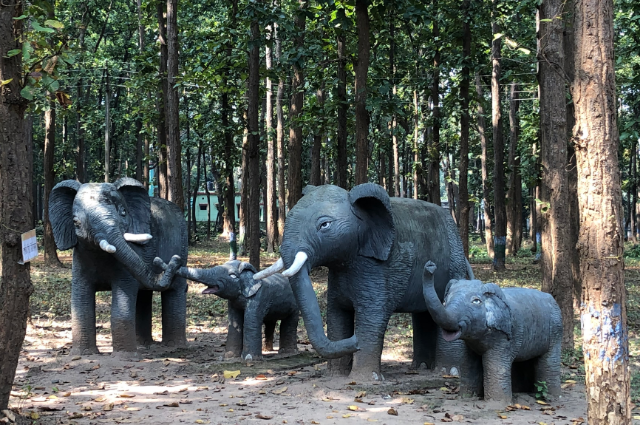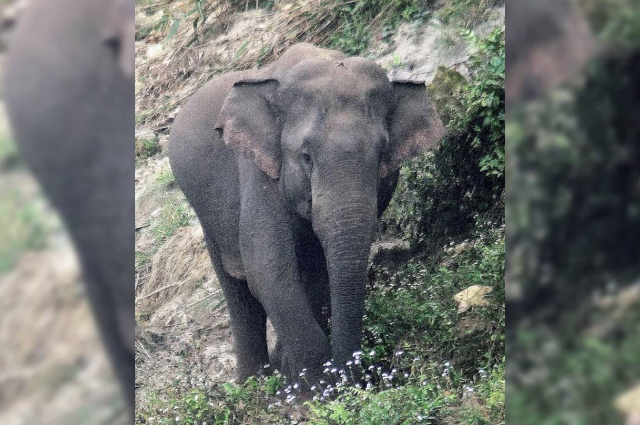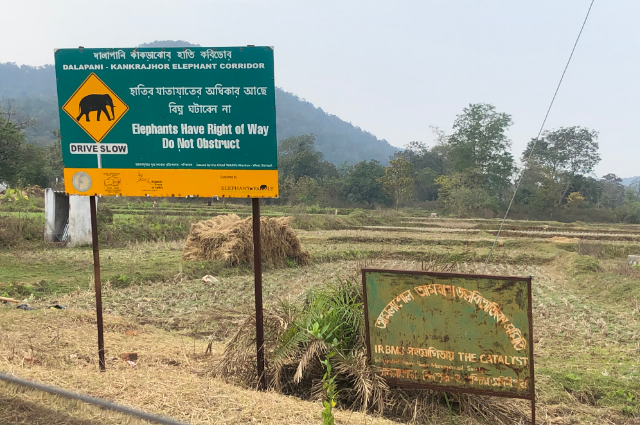
Human-animal conflicts are reported from around the world, but the epic battle between man and elephants is particularly a very sad story. The rapid loss of habitat and increasing loss of suitable foraging sites within the degraded forests have been pushing the pachyderms for mass migration from one region to another. The consequences have been unfortunate deaths of the gentle giants by coming in contact with live electric wires, unfortunate road and railway accidents, poaching, drowning in big reservoirs, or direct clashes with farming communities as they destroy crop fields in their migration routes across elephant habitats in Asia and Africa. The conflicts have also cost the lives of unfortunate human victims who got entangled in this epic man-animal conflict. It is, therefore necessary to improve the quality of habitats of wild Asiatic and African elephants, restrict them from moving into human settlements, secure elephant migration corridors and protect them from poachers.
But this simple story depicted above is not so simple as is all a part of a highly complex and critical issue that needs our immediate attention. Elephants in both continents were once targeted due to the global ivory trade. However, the global banning of all kinds of ivory products; and the increased awareness among mass about the mass slaughter of elephants for ivory have reduced or suppressed this trade successfully. Although the global ivory trade is not completely under control; the demand for ivory has certainly become lower due to stringent legislation and change in people’s attitude toward procuring ivory from poached elephants. With decreasing demand for ivory in the international illegal wildlife markets operating in parts of China and South East Asia; a paradigm shift is now being observed concerning the exploitation of wild elephant herds across Africa and Asia.
Elephant-human conflicts across the Indian subcontinent have been one of the most serious wildlife conservation challenges faced during the past five decades.

Poachers and illegal wildlife trade traffickers are now targeting elephants for collecting their skin for making jewelry, and different body parts due to high demands for traditional naturopathic and traditional medicines. Now helpless wild elephants are being shot with high-powered rifles and even advanced machine guns to make a bigger harvest. Often the poor animals are poisoned intentionally so that they do not run away from the boy's herd for collecting the skin. The elephant body parts are being sold in illegal trophy markets as well as the traditional medicine industry at very high prices making profits for all. The leftover elephant meat ate then being sold at local bush meat markets or illegal wildlife markets specializing in wild bush meat for rich customers and high-end restaurants serving wild meat. Such evil practices have completely jeopardized the conservation efforts of the elephants drastically.
Elephants are big mammals and they are used to migrate in search of food, water, and mates. They travel in large groups or herds and move from one country to another or from one region to the other in search of better foraging grounds. They are extremely intelligent and remember their routes and always follow the same path. However anthropogenic pressures around the world have been pushing the migration corridors further and further farther away from their original position; and making the life of elephants very difficult. This shifted migration routes due to anthropogenic pressures have forced them to pass through crop fields, orchards, human settlements, villages, and towns bringing them into a confrontation with people. All the elephants are being held responsible for the massive death and destruction on their path to their favorite migration corridors very few experts acknowledge the pressure on their lives and the lifecycle created by humans.
These challenges with the mighty pachyderms have food some people to use gruesome techniques and unacceptable lethal methods to eradicate them from their residential areas. This Could include using poison baits, toxic pesticides, and live high voltage electric cables in their oaths to kill or shock them. Furthermore, recent reports from southern India of an incident where food laced with firecrackers were given to a female elephant that exploded inside her mouth and killed her painfully. The incident raised a great hue and cry across India, but little has changed to date. Railway and highway accidents killing pachyderms are a common affair. Animal corridors have been established, but little has been done to educate and aware the drivers or book them under Indian Criminal Code for their callous attitude and lack of responsibility.
It is important to better understand the plight of our pachyderm neighbors and then develop suitable strategies for their conservation efforts. As humans, we need to treat them as our friends and not just wild enemies. A gross change in attitude is therefore necessary.

Thus the common onslaught of innumerable anthropogenic factors has been decimating the global elephant populations. It is quite unfortunate that even corrupt governments in some countries are involved in the illegal trade of elephant tusks, bones, horns, skin, trunk, feet, and other body parts. It has therefore become quite challenging to protect these helpless giants. Recently, in China forest officials tracked the unprecedented migration of local elephants in the Yunan province using drones to record migration patterns. We are failing to realize and appreciate the great ecological roles played by the elephants in our ecosystems. We as humans have been only focusing on the negative aspect of human-animal conflict without paying attention to the factors why elephants are elephants are moving out of the forests. Habitat destruction, lack of food in the forest, and human pressure beyond carrying capacity on the elephant habitats are forcing them out of their habitats. It is us as humans who are responsible for the crises, not the elephants.
Elephants are migratory mammals and they need undisturbed land and forest corridors to move from one region to another depending on season and food availability. It is important to respect their biological needs and provide them the space to maintain the privacy of their natural biological cycles. Severe human encroachments into premier elephant habitats and migration corridors are important factors contributing to elephant-human conflicts resulting in tragic incidents on both sides.
Under these circumstances, elephant conservation both in Asia and Africa has hit a wall too high to climb. The investors in illegal wildlife trade and transportation are investing heavily to arm local tribesmen to track and hunt elephants on an industrial scale wiping out vulnerable herds. The rapid and unprecedented decline in wild elephant populations across sensitive elephant habitats in Asia and Africa now needs international attention and support. The time is short and the danger of extinction for wild elephant herds is becoming increasingly higher by the day. It is fine to act immediately on this to save the pachyderms from the devastating loss of various subpopulations. The exploitation of the gentle giants is causing great concern for their future.
